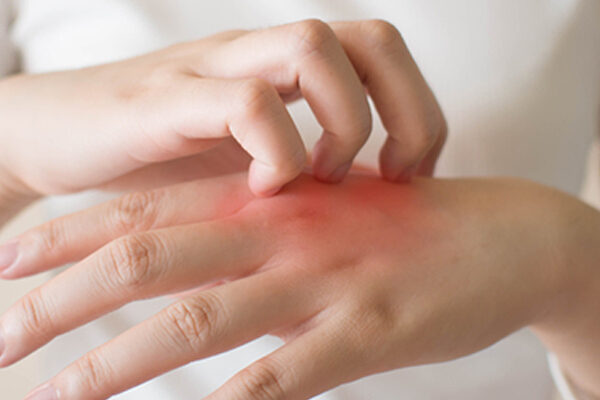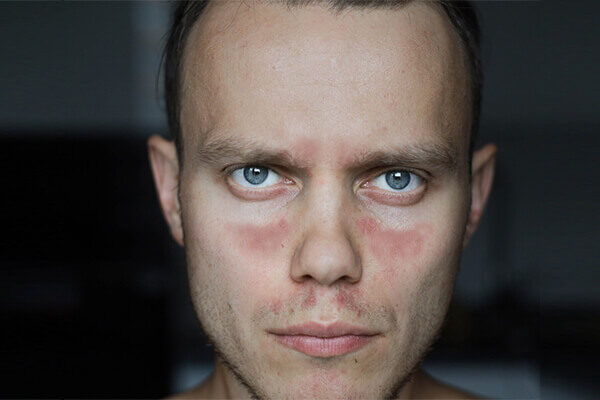Updated on November 7, 2023
Overview
Psoriasiform dermatitis is a dermatological disorder that causes skin irritation and the production of scaly, red plaques similar to psoriasis. While it shares similarities with psoriasis, it covers a broader range of skin conditions with a psoriasis-like appearance.
This blog will look at the causes, symptoms, and various treatment options to treat this condition.
What is Psoriasiform Dermatitis?
It is a term used to describe a broad range of skin disorders that mirror the clinical and histological aspects of psoriasis. Dermatologists classify these disorders based on their different characteristics, such as appearance, distribution, and underlying etiology.
Common subtypes include drug-induced dermatitis, seborrheic dermatitis, and lichenoid dermatitis.
Drug-induced Psoriasiform Dermatitis:
Drug-induced psoriasiform dermatitis is often caused by a hypersensitivity reaction to drugs. Beta-blockers, lithium, and antimalarial medications are examples of notable triggers. The challenge lies in balancing the management of the skin condition while ensuring the continuation of necessary medications.
Seborrheic Dermatitis
Seborrheic dermatitis, which causes red, itchy, and scaly skin, commonly affects areas with a high concentration of sebaceous glands. Its connection to psoriasiform dermatitis lies in the shared inflammatory pathways, emphasizing the importance of considering both conditions in diagnosis and treatment planning.
Lichenoid Dermatitis
With its interface dermatitis pattern, lichenoid dermatitis poses a unique problem. This inflammatory skin disorder is distinguished by skin damage at the junction of the epidermis and dermis. Understanding the histopathological nuances is crucial for accurate diagnosis and targeted intervention.
What Causes Psoriasiform Dermatitis?
A better understanding of the etiology of this condition throws insight into the intricate mechanisms triggering skin disorder.
Immunological Factors
Immunological dysregulation plays a major role in the development of this condition. Disruptions in immune signaling pathways contribute to the formation of inflammatory plaques. Exploring these pathways provides useful information about potential treatment approaches.
Genetic Predisposition
Genetic factors contribute to an individual’s susceptibility to psoriasiform dermatitis. Specific gene variations associated with greater risk have been identified, underlining the connection between heredity and environmental stimuli.
Environmental Triggers
In addition to drugs, stress, illnesses, and changes in the weather can aggravate or act as a trigger. Unraveling these triggers helps in the development of comprehensive treatment regimens that address both internal and environmental factors.
What is Spongiotic Psoriasiform Dermatitis?
This is a type of skin inflammation characterized by intercellular edema (spongiosis) and a psoriasis-like histological pattern. Clinically, it can look like psoriasis with red, scaly plaques on the skin, but the underlying histological traits distinguish it and help healthcare experts make a clear diagnosis.
To better understand the meaning of this term, let’s break it down into its components:
- Spongiotic: The presence of spongiosis, a histological characteristic defined by intercellular edema (fluid between skin cells), is referred to as spongiotic. A buildup of fluid produces a division between the cells of the epidermis (the skin’s outermost layer) in spongiotic conditions, giving the skin a sponge-like look under the microscope.
- Psoriasiform: This means that the inflammatory pattern shown in the skin biopsy is similar to psoriasis. Psoriasis is a chronic skin illness marked by the fast accumulation of skin cells, which results in the production of thick, scaly plaques.
- Dermatitis: This is a broad term for skin irritation. Dermatitis can be caused by a variety of factors, and it is frequently linked with redness, itching, and other skin symptoms.
What are the Symptoms of Psoriasiform Dermatitis?
Psoriasiform dermatitis presents with a number of symptoms that are similar to psoriasis. Common clinical manifestations include:
- Red, scaly plaques: The presence of well-defined, raised, and scaly plaques on the skin is a defining feature of this condition.
- Itching and discomfort: Individuals may feel itching and discomfort, which can have a negative impact on their quality of life.
- Variable distribution: Lesions can form anywhere on the body, including the scalp, elbows, knees, and trunk.
Psoriasiform Dermatitis Diagnosis
Diagnosis is based on a comprehensive approach that combines clinical, histological, and investigative features.
- Dermoscopic Examination: Dermoscopy is a non-invasive method that enables a magnified study of skin lesions. Differentiating this condition from other dermatological disorders is made easier by identifying particular dermoscopic features.
- Histopathological Analysis: A skin biopsy is still the gold standard for establishing the diagnosis. Examining histological findings such as epidermal alterations and the form of inflammatory infiltration helps to narrow down a specific subtype.
- Imaging Techniques: Advanced imaging techniques, such as high-resolution ultrasonography and optical coherence tomography, have been added to the diagnostic techniques. These modalities provide detailed data on the structural changes occurring in the affected skin layers.
Psoriasiform Dermatitis Management
Treatment must be personalized to the specific subtype while also addressing underlying reasons for effective management.
Topical Therapies:
- Corticosteroids: Topical corticosteroids remain a cornerstone to treat psoriasiform dermatitis. They efficiently reduce inflammation and relieve symptoms. However, extended use may cause skin thinning, necessitating careful monitoring.
- Topical Calcineurin Inhibitors: For areas where corticosteroids may be hazardous, such as the face and intertriginous regions, topical calcineurin inhibitors such as tacrolimus or pimecrolimus are an option. They are suitable for sensitive areas since they modulate the immune response locally.
- Emollients and Moisturizers: Regular use of emollients and moisturizers helps relieve dryness and prevents excessive scaling that is a characteristic feature of this condition. This easy yet important procedure improves overall skin health.
Systemic Therapies:
- Oral Drugs: In cases of moderate to severe symptoms, oral medications may be warranted. Methotrexate, acitretin, and cyclosporine are often recommended medications. During systemic therapy, it is essential to monitor for potential side effects such as liver and renal function.
- Biotherapeutics: TNF-alpha inhibitors (e.g., adalimumab, etanercept) and other drugs targeting interleukins have transformed the management of psoriasiform dermatitis. These medications provide personalized and frequently more effective treatment while causing less systemic side effects. However, their use may be limited by factors such as costs and potential immunosuppression.
Lifestyle Consideration:
- Stress Management: Stress is a known trigger for psoriasiform dermatitis flare-ups. Stress-reduction strategies such as mindfulness, meditation, or yoga can help with symptom management as well as overall well-being.
- Sun Protection: While moderate sunlight exposure can be beneficial for some skin disorders, excessive sun exposure may aggravate the condition. Individuals must use sun protection measures, such as sunscreen and protective clothes.
- Healthy Diet: There is growing evidence that nutrition affects skin health. While no single dietary program has been shown to cure such conditions, eating a well-balanced diet rich in fruits, vegetables, and omega-3 fatty acids may contribute to overall skin health.
Summary
Psoriasiform dermatitis poses a diagnostic challenge due to its diverse etiology and clinical features overlapping with psoriasis. Itching, irritation, discomfort, and the visible nature of skin lesions all have a negative impact on a person’s quality of life. The management of this condition requires a multifaceted approach that addresses the underlying causes, provides symptomatic relief, and considers the individual needs of the patient. Many clinical research organizations are working towards finding other potential treatment approaches that may help people live better.





